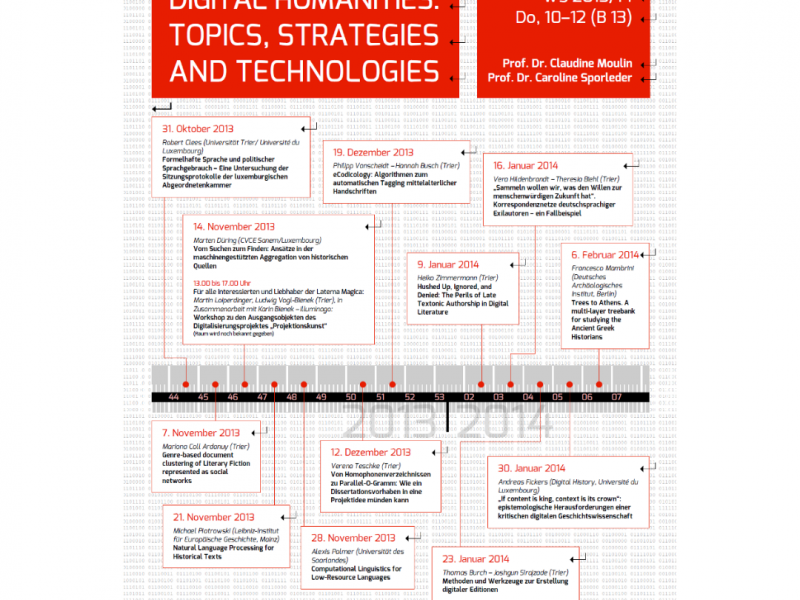Digital Geo-Archaeology
Lecture by Dr Armin Volkmann (University of Würzburg)

Date:
09.01.2013Place:
8:30 am, room A 338, University of Trier
Categories:
EventTitle: Generierung von neuem Wissen in der Digitalen Archäologie: Site Catchment Analysis der Völkerwanderungszeit im Odergebiet in einem GIS.
‘Digital Archaeology’ is the generic term of various disciplines that intensely use digital methods within research and teaching in the study of antiquity. One of these disciplines is the Geo-Archaeology, focusing primarily on geological questions in an archaeological context. Within specific geo-archaeological research, the basic question of the relation between prehistoric settlers and their environment has been focused on. Here, the site catchment analysis has been developed which is integrated into a geographical information system (GIS). The archaeological data of the archive of excavation places in many archaeological facilities have been brought together in the GIS with the cartographical geo-spatial data of the geological basic services (via WMS- World Map Server) and were systematically analysed.
On a first stage of analysis, appealing visualisations and a modelling of the prehistoric space could be created in the GIS on the basis of data concerning the intensity of occupation, contact spheres, and settlement patterns in chronological sequence. In a second step, within the framework of a site catchment analysis new data on the archaeological sites were generated and entered into a database linked to every single finding point, forming the basis for the following statistical procedures.
Based in the data of the field examination, the research revealed significantly varying demands of settlers on their close and broader living environment in a chronological sequence. At the same time, the demands in one particular time phase were surprisingly homogenous. This is to be seen as a clear signal of climate fluctuations, assuming a mostly stable economy from the Roman Imperial Period to the Early Middle Ages (based on the findings in the archaeological database).
In a third step, these hypothetical connections of the choice of the settlement location and climate changes were compared to climate proxies established on the basis of the natural sciences by which the climate signs based on the analysis of the environment could generally be confirmed, proving the functioning of the method.
In other testing regions, the newly developed method will be applied in order to be able to identify regional effects more sufficiently and to exemplarily demonstrate prehistoric spatial concepts. A general differentiation is to be made between regions of the inner Barbaricum, the border areas of the former Roman Empire, and regions in the Roman Empire itself. In the Barbaricum, the choice of settlement areas seems to have been much more depending on geo-ecological factors since the economic basis was based on crop cultivation and animal farming. In the sphere of the Roman Empire, trading was the most prominent economic basis of many settlements. Within the Roman Empire, the ‘romanisation’ of the population – in both urban and rural areas – seems to have caused a much more sufficient opening up of the surrounding land that could be less dependent on geographical geo-ecological factors.
In following examinations, particularly this question will be investigated. Possible concept of the opening up of particular regions will be established, their chronological development and regional manifestation will be standardised and analysed consequently (and thus made comparable) in a GIS.
All guests are very welcome!

